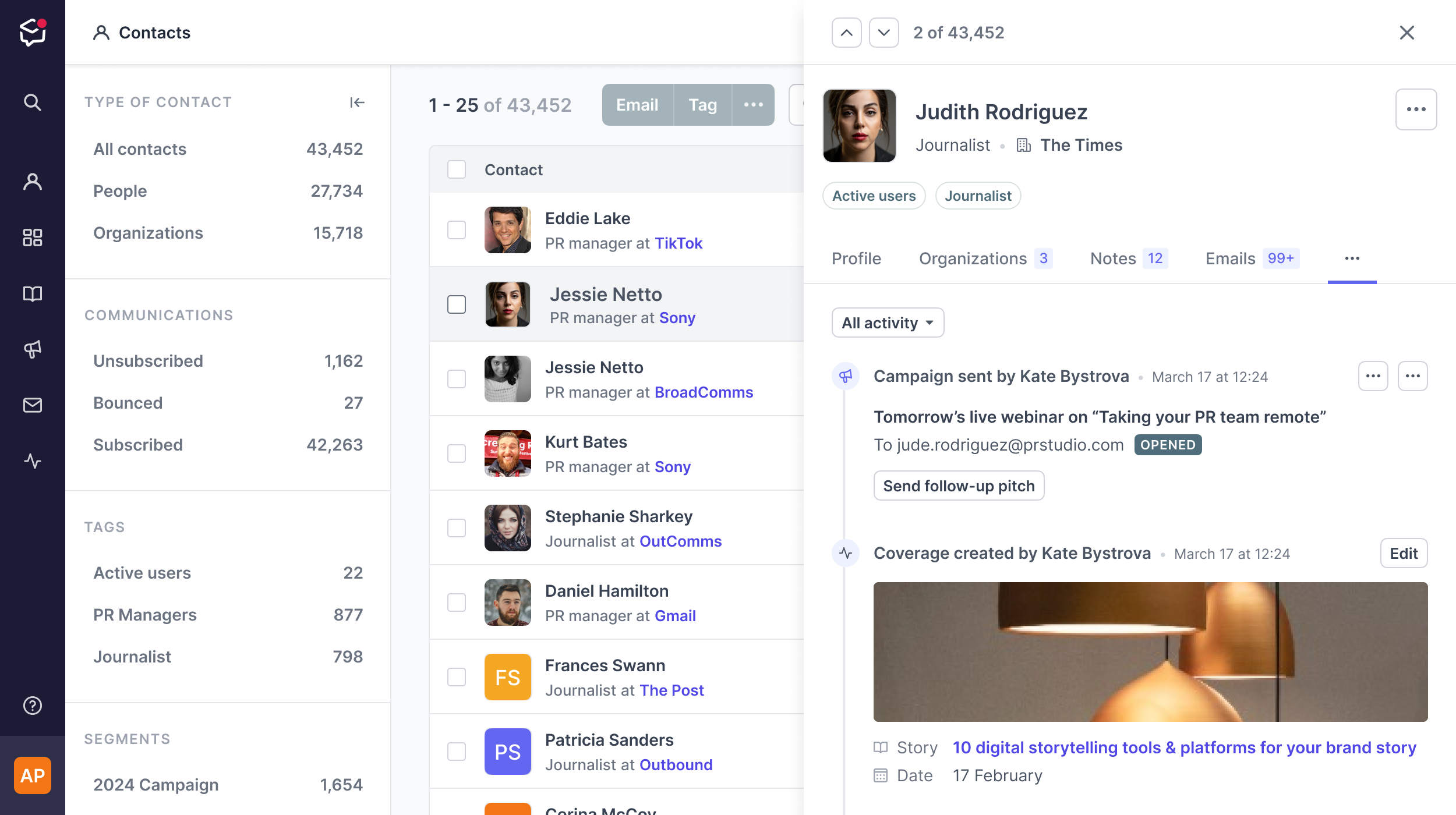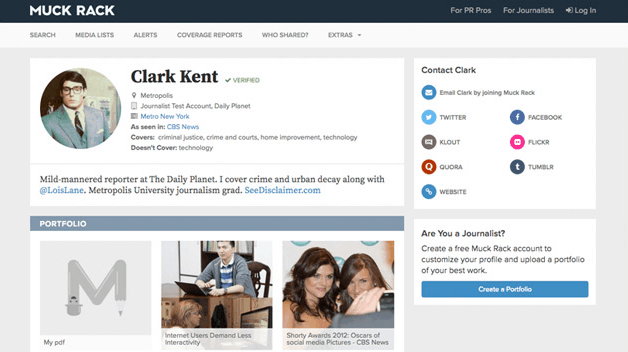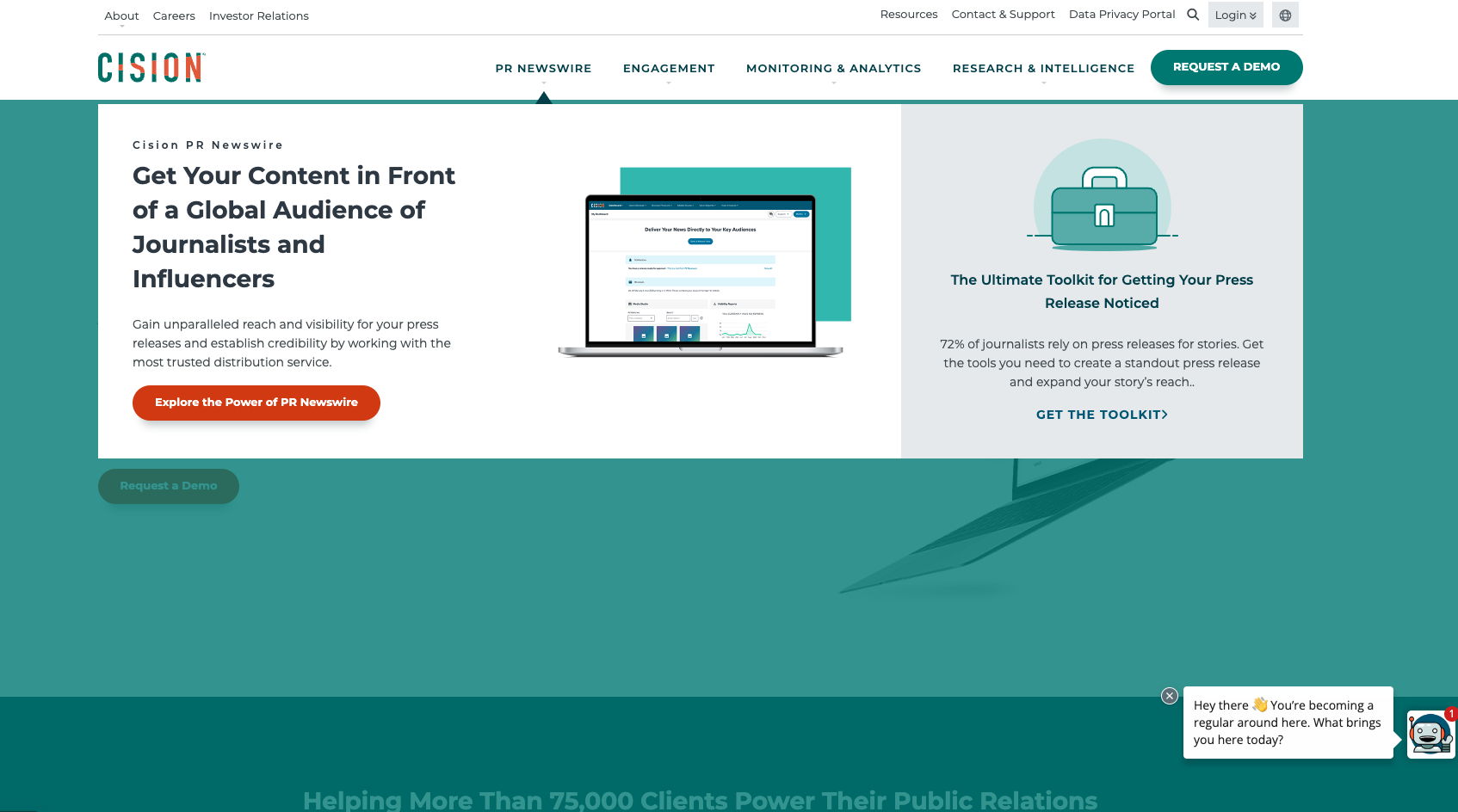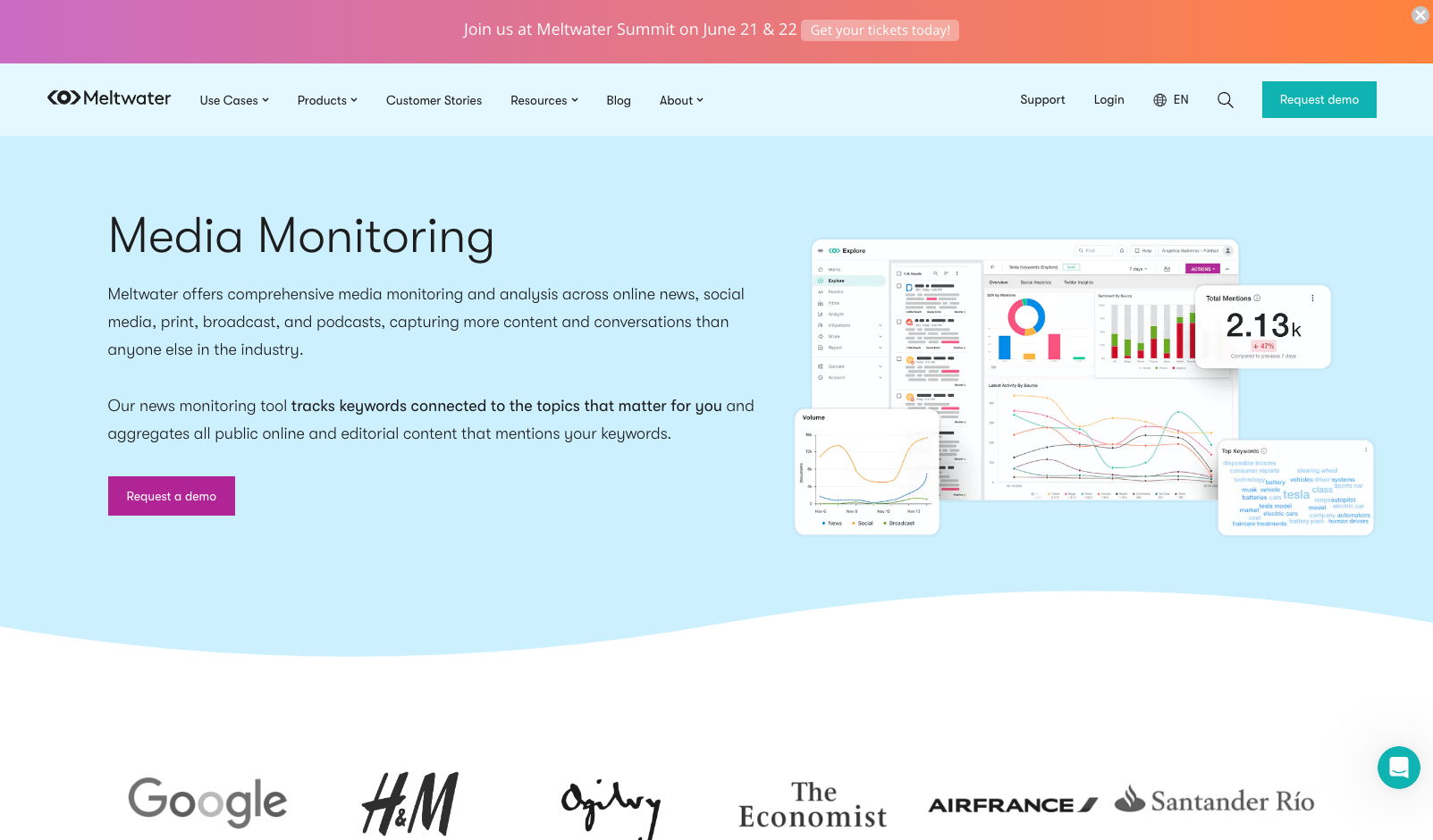The 5 Best Media Databases in 2025 (Pricing & Alternatives)
How to tell if a media database will actually help your PR.
Media databases promise access to thousands of journalists at the click of a button. But do they actually help you get press, or just eat your budget alive?
In a world where everyone’s pitching the same stories to the same people, standing out takes more than a giant media contacts database.
Let's break down what these platforms actually offer, where they fall short, and why building your own media list might be the smarter long-term play for your PR strategy.
Start 14-day free trialAt its core, a media database is a searchable tool used by PR pros to find and contact journalists, influencers, and other members of the media. These platforms are often marketed as a silver bullet, giving you access to thousands of media contacts, categorized by job title, beat, outlet, or region.
The promise is simple: you get a list of relevant media contacts, you send them a pitch, and you sit back while the media coverage rolls in.
But here's the catch: most of these databases are just giant, precompiled media contact lists. They don’t help you identify the most relevant contacts, nor do they tell you who's actually interested in your story or still working at that publication.
Think of it less like a scalpel, more like a cannon.
It’s easy to see the appeal. Under pressure to secure coverage, many PR teams turn to media database tools hoping to cut through the noise with speed and scale.
Here’s what they’re often sold on:
- Time-saving search: Type in a keyword, beat, or media type, and get a list of relevant journalists in seconds
- Built-in pitching tools: Some platforms bundle in features like email distribution, click tracking, and follow-up reminders
- Scalable outreach: Want to send a pitch to 500 people? Sure. Want to track opens and responses? Some tools offer that too
Especially for lean PR teams, agency environments, or comms departments supporting a large sales team, a media database feels like a lifeline. It's a quick way to find journalists, particularly when you're breaking into a new market or trying to promote a major product launch.
Ready to build your best media list yet?
Use Prezly to create, manage, and grow a dedicated list of PR contacts. Send pitches, log coverage, monitor media mentions, and get insights into who is opening your emails. Start now with a zero obligation, 14-day free trial.

What starts as a shortcut often ends up being a time (and money) sink. Here’s why:
The biggest problem? Media contact information goes stale fast. Journalists move jobs, change beats, leave the industry. The average database struggles to stay up to date, and many rely on users to flag inaccuracies. That means your pitch might go to someone who left three months ago… or no one at all.
Worse, some platforms list contact details without verification, so you get bounced emails, ignored messages, or worse, spam complaints.
Most media database tools are designed for bulk outreach. That makes it tempting to copy-paste the same press release to hundreds of contacts, regardless of whether they’re a good fit.
But journalists are humans, not targets. And they can spot a mass email from a mile away. If you're not tailoring your message to each target audience, don’t be surprised when you get ghosted.
Many platforms boast "millions of unique contacts," but in practice, relevant contacts get pitched over and over again. Imagine you're a reporter getting 30 versions of the same pitch from 30 companies every. single. day.
That kind of media outreach burns bridges fast. And once a journalist starts ignoring one PR tool's users, you're out of luck.
Let’s talk numbers. Most top media databases cost anywhere from $3,000 to $10,000+ per year, depending on features and number of users. For small teams or solo practitioners, that’s a hefty chunk of budget, especially if your open rates stay under 10% and your stories still don’t land.
All this automation makes it easy to forget the point of public relations: building relationships.
Blasting cold emails to strangers may technically count as outreach, but it doesn't foster trust. And in a post-spam world, trust is the only thing that moves the needle.
Here’s a closer look at some of the biggest platforms on the market, and what you can expect.
Great for teams who want collaboration tools and real-time media engagement tracking.
Pros:
- Sleek, modern UI makes searching and filtering relevant media contacts surprisingly fast and intuitive.
- Strong team workflows – you can share notes, view pitch history, and avoid embarrassing double-pitches.
- Built-in media monitoring lets you track when journalists mention your brand or competitors in recent articles.
- Good for staying organized across multiple client campaigns or product launches.
Cons:
- Pricey for small teams or freelancers – custom pricing can quickly outpace your ROI if you’re not running frequent outreach.
- Limited benefit if you’re only pitching occasionally; it’s a lot of firepower for one-off press releases.
- Their media database is strong, but like all big platforms, there’s still some risk of outdated contact details.
Pricing: Custom quotes, but expect a minimum of $5,000/year depending on your needs. See our full Muck Rack pricing breakdown →
A legacy PR giant with a massive journalist database, media monitoring, and distribution suite.
Pros:
- Extensive database of media outlets, journalists, influencers – one of the largest on the market.
- Offers strong global reach for companies targeting international media types.
- Includes press release distribution services via PR Newswire, plus detailed media monitoring and reporting tools.
- Useful if you’re running massive campaigns that need worldwide saturation.
Cons:
- Clunky UX – feels dated compared to newer platforms, with lots of clicking around to get simple things done.
- Slow support reported by many users, especially if you're not on an enterprise contract.
- High pricing tiers – everything from extra users to distribution credits can add up fast.
- Like other databases, keeping accurate information is a constant challenge.
Pricing: Usually starts at $7,000+/year for basic packages; enterprise options cost far more with add-ons.Full Cision pricing guide here
For those considering a Cision alternative due to these challenges, check out The 7 Best Cision Competitors & Alternatives →
More affordable entry point. Great for smaller PR teams or startups dipping into media relations.
Pros:
- Offers a lightweight PR CRM to organize media lists, contacts, and pitch histories.
- Newsroom hosting feature makes publishing and sharing press materials easier and more professional-looking.
- Built-in email tools support email distribution, basic tracking, and a clean design interface.
- Integrated with Semrush, adding marketing and SEO synergy if you already use those tools.
Cons:
- Limited media types and a smaller media database compared to heavyweights like Cision.
- If you're targeting very niche or hyperlocal relevant contacts, you may find fewer options.
- Some users find the analytics side a bit thin compared to bigger competitors.
Pricing: Starts at $258/month for the platform; access to the media database is an additional paid add-on, free trial available.More on Prowly’s pricing
For a more detailed overview of Prowly's pros and cons, pricing, and key features, read our roundup of Prowly reviews →
Solid starter choice for small businesses and growing PR teams who want personalized support.
- Pros:
- Strong customer support – Agility is known for hand-holding through setup and ongoing account management.
- More flexible pricing models than competitors; often more affordable for early-stage PR efforts.
- Good basic search and list-building features to find relevant journalists and target audience groups.
- Cons:
- Fewer media contacts overall – you might struggle if you need hyper-specific verticals or international reach.
- Fewer integrations with CRM, sales, or marketing platforms compared to enterprise options.
- Some users report that their media coverage monitoring is a little slower compared to real-time giants.
- Pricing: Around $3,000/year, making it one of the more affordable full-service options.
Enterprise-level monster – ideal for large-scale PR teams that need deep insights across multiple regions and sectors.
Pros:
- All-in-one offering includes media monitoring, social listening, news aggregation, reporting, and distribution
- Comprehensive media database covering journalists, analysts, bloggers, influencers, and podcasts
- Powerful search functionality across billions of documents, articles, and media outlets
- Excellent for tracking coverage, sentiment, and competitive intelligence across industries
Cons:
- Expensive and complex, overkill for scrappy PR teams or startups just looking for basic media contact information
- Requires serious onboarding time to use all features properly; expect a learning curve
- Platform updates can be uneven, and some users mention inconsistent support experiences
Pricing: Custom, but expect around $10,000/year to start, highly dependent on features, regions, and team size.
If you want control, clarity, and accurate information, nothing beats building and managing your own media contacts by building your own media list.
Here’s why that strategy wins in the long run:
- You handpick relevant media contacts who actually care about your niche, not just anyone who once covered a vaguely related topic three years ago
- You keep your contact details up to date, ensuring you always reach the right journalists at the right outlets
- You personalize every pitch, which means you're not just another email in an overcrowded inbox, you're building real, lasting relationships
- You’re not sharing your leads with a thousand other PR teams sending the same tired press releases
- You build trust over time securing better, more meaningful media coverage because journalists recognize and respect your name

An in-depth guide to researching and managing your PR contact list.
Most PR databases promise more contacts. Prezly helps you focus on the most relevant contacts.
Instead of a bloated, outdated journalist database you have to pay extra to use, Prezly gives you everything you need to manage your own media lists, with the tools to nurture real connections:
Easily manage and share your own media contact information across your whole team, with a timeline view showing every interaction, pitch, and story you’ve sent. (No more guessing who last reached out.)
Send personalized pitches directly from your media contacts database, and see who opened, clicked, and engaged – helping you follow up smartly and secure coverage faster.
Organize your own media list exactly how you want. Group contacts by media types, beat, region, outlet, or even job title – and use custom notes to keep track of what matters most for building relationships.
Bring your existing lists into Prezly in a few clicks – and export your contacts anytime you want. Your contact details are always yours to keep.
No noisy sales team constantly upselling you on “more contacts”. No clutter. Just you, your team, and the relevant journalists who actually want to hear from you.
We don’t include a bloated media database tool, and we’re proud of that.
Because real PR isn’t about blasting out mass emails to anyone with a byline. It’s about finding the right journalists, crafting better stories, and building relationships that actually move the needle.
Prezly is the PR platform for teams who care about making an impact, not just making noise.
Okay, we’ll admit: sometimes buying a PR database makes strategic sense.
Consider it if:
- You’re entering a market with zero relevant contacts
- You’re running PR for hundreds of clients and need volume
- You’re supporting global product launches with tight deadlines
But even then, it should be a launchpad, not your whole PR strategy.
- Media databases can be helpful for scale but often fall short on relevance
- They’re expensive, impersonal, and packed with outdated contact info
- Building your own media list takes more time but delivers better coverage, relationships, and ROI
- Tools like Prezly support smarter outreach without bloated costs or cold blasts
Planning your next product launch, campaign, or story?
With Prezly, you’ll find the most relevant contacts, craft pitches journalists actually read, and track your outreach every step of the way, all without the noise, bloat, or endless upsells.
Ready to start growing your media reach?
With Prezly you can publish press releases online, and share them directly with journalists. 14-day free trial, no credit card required.




